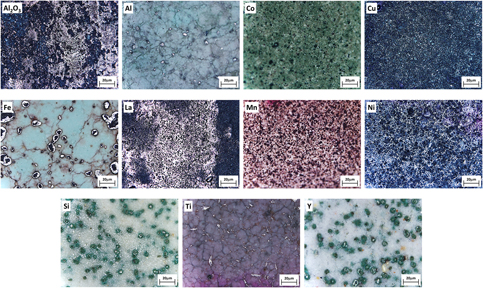Article contents
Effect of additions of metal submicron particles on properties of alumina matrix composites
Published online by Cambridge University Press: 04 June 2019
Abstract

Ceramic–metal composites are an important group of materials that have gained interest recently because of their peculiar properties. There have been numerous studies on the reinforcement of alumina through the incorporation of various ductile metals in it. However, these studies have been limited to determining the effect of the addition of metals on the mechanical properties of ceramics, without determining the effect of these metal additions on other physical properties of the resulting composite. In this way, in agreement with the obtained results, we have that because of the conductive nature of metals, there is a considerable decrease in the electrical resistivity of alumina, mainly when copper is added to it. However, in terms of optical performance, alumina matrix composites showed significant changes in absorbance in the visible spectra. The addition of iron, titanium, and yttrium enhanced the absorbance of alumina, whereas manganese addition significantly decreased the optical absorption.
Keywords
- Type
- Article
- Information
- Journal of Materials Research , Volume 34 , Issue 17: Focus Issue: Building Advanced Materials via Particle Aggregation and Molecular Self-Assembly , 16 September 2019 , pp. 2983 - 2989
- Copyright
- Copyright © Materials Research Society 2019
References
- 9
- Cited by




